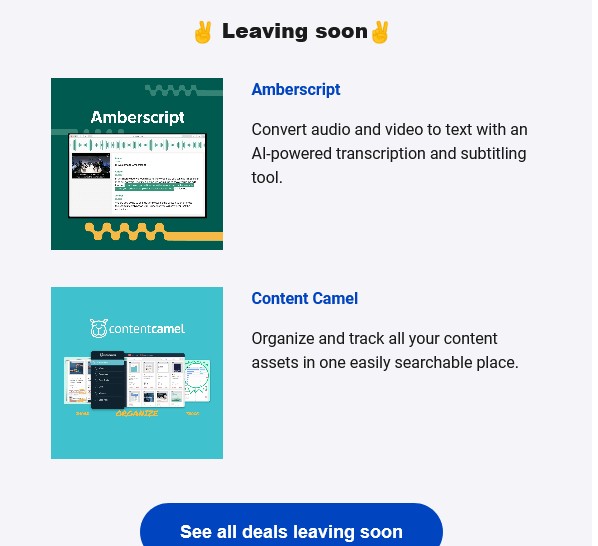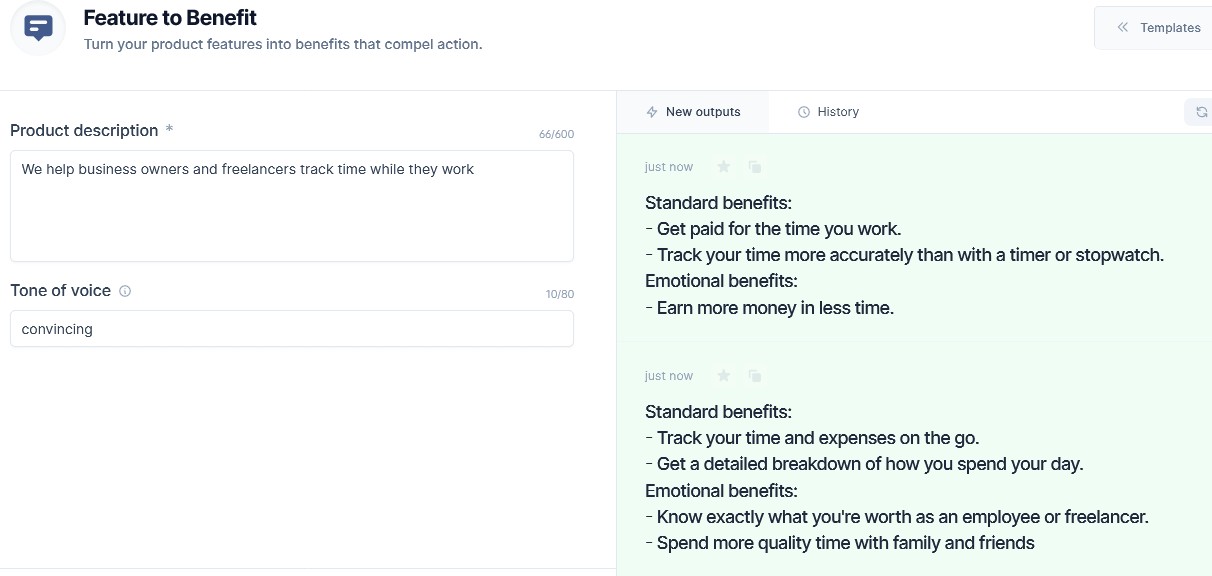Learning copywriting can be a rewarding journey. Copywriting, the art of crafting persuasive text for marketing, is a highly sought-after skill. Whether you’re a beginner or looking to refine your abilities, this guide from LEARNS.EDU.VN provides a clear roadmap to master copywriting. We’ll explore fundamental skills, practical tips, and valuable resources to help you excel in this dynamic field. Unlock your potential, boost your career prospects, and learn how to create compelling copy that converts with our proven strategies.
1. Understanding the Fundamentals of Copywriting
What exactly is copywriting? It’s much more than just writing; it’s about crafting words that sell. It’s the art and science of creating persuasive content that motivates readers to take a specific action, such as making a purchase, signing up for a newsletter, or visiting a website. Copywriting is a vital element of marketing and advertising strategies.
Copywriting is used in numerous mediums, from websites and email marketing to print ads and social media campaigns. Effective copywriting grabs attention, highlights benefits, and drives conversions. Understanding these core principles is the first step to mastering this skill.
1.1. Defining Copywriting
Copywriting is the process of writing persuasive marketing and promotional materials that motivate people to take action. This action could be anything from buying a product to subscribing to a service, or simply learning more about a brand.
1.2. Copywriting vs. Content Writing: Key Differences
While both copywriters and content writers create written material, their goals differ. Copywriting focuses on persuasion and sales, while content writing aims to inform, educate, or entertain.
| Feature | Copywriting | Content Writing |
|---|---|---|
| Primary Goal | Persuade and sell | Inform, educate, entertain |
| Focus | Product benefits, calls to action | Providing value, building relationships |
| Tone | Persuasive, action-oriented | Informative, engaging |
| Length | Often shorter, concise | Can be longer, more detailed |
| Examples | Ad copy, landing pages, email campaigns | Blog posts, articles, ebooks |





1.3. The Importance of Copywriting in Marketing
Effective copywriting is essential for driving sales, increasing brand awareness, and building customer loyalty. According to the Direct Marketing Association, every dollar spent on email marketing can generate an average return of $42. This impressive ROI highlights the power of well-crafted copy in achieving marketing goals. Strong copywriting ensures your marketing messages resonate with your target audience and compel them to act.
2. Laying the Groundwork: Essential Steps for Beginners
Embarking on a copywriting career requires a willingness to learn and adapt. Here’s how to start, even with zero experience.
2.1. Immerse Yourself in Learning
Start by understanding the theory behind effective copywriting. Read books, blogs, and articles from industry experts. Some recommended resources include:
- Books: “The Copywriter’s Handbook” by Robert Bly, “Hey, Whipple, Squeeze This” by Luke Sullivan, and “Cashvertising” by Drew Eric Whitman.
- Blogs: Copyblogger, Neil Patel’s blog, and MarketingProfs.
- Online Courses: Platforms like Coursera, Udemy, and Skillshare offer courses on copywriting and digital marketing.
2.2. Analyze Successful Copy
One of the best ways to learn is by studying successful copywriting examples. Deconstruct ads, landing pages, and email campaigns from various industries. Ask yourself:
- What makes this copy effective?
- How does it grab attention?
- What persuasive techniques are used?
- How does it address the audience’s needs and desires?
By reverse-engineering effective copy, you’ll gain insights into what works and why.
2.3. Practice, Practice, Practice
The key to mastering any skill is practice. Start by writing fictional copy for imaginary products or services. Create headlines, ad copy, and email campaigns. Some effective exercises include:
- Rewriting famous ads to understand their structure and persuasive techniques.
- Crafting landing pages for pretend businesses, focusing on clear value propositions.
- Writing multiple headlines daily to hone your ability to grab attention quickly.
- Creating ads for movies or products you recently experienced.
- Rewriting sales emails from your favorite brands to improve their effectiveness.
2.4. Create a Portfolio
As you practice, compile your best work into a portfolio. This collection showcases your skills and provides potential clients or employers with tangible evidence of your abilities. Include a variety of copy types to demonstrate your versatility.
3. Honing Your Skills: Key Copywriting Abilities You Need
To succeed in copywriting, certain skills are essential. These abilities enable you to craft compelling, persuasive copy that resonates with your target audience.
3.1. Mastering Strong Writing
At its core, copywriting requires excellent writing skills. This includes:
- Clarity: Write in a clear, easy-to-understand style. Avoid jargon and complex sentence structures.
- Conciseness: Use as few words as possible to convey your message. Cut out unnecessary phrases and fluff.
- Convincing Language: Craft copy that persuades readers to take action. Highlight benefits and address their needs.
- Good Grammar: Ensure your copy is free of grammatical errors and typos. Errors can undermine your credibility.
3.2. Understanding Your Customer
Effective copywriting is all about understanding your audience. You need to know:
- Who is your target audience? Define their demographics, interests, and pain points.
- What are their needs and desires? Understand what motivates them to take action.
- What language do they use? Write in a style that resonates with them.
- What are their objections? Address potential concerns and hesitations.
To gain customer insight, conduct market research, analyze customer data, and engage with your target audience through surveys and interviews.
3.3. Marketing and Sales Acumen
Copywriting is an integral part of the marketing and sales process. A basic understanding of marketing principles and sales techniques can significantly enhance your copywriting skills. Familiarize yourself with:
- Sales Funnels: Understand the different stages of the customer journey and how to tailor your copy accordingly.
- Marketing Strategies: Learn about various marketing strategies and how copywriting fits into them.
- Customer Relationship Management (CRM): Understand how CRM systems help track and manage customer interactions.
3.4. Converting Features into Benefits
Customers don’t buy features; they buy benefits. The ability to translate product features into tangible benefits is a critical copywriting skill.
Example:
- Feature: A camera with 20-megapixel resolution.
- Benefit: Capture stunning, high-quality photos that you’ll be proud to share.
Focus on how the product or service will improve the customer’s life, solve their problems, or fulfill their desires.
3.5. Embracing Versatility
As a copywriter, you’ll need to adapt to different industries, brands, and writing styles. This versatility requires:
- Adaptability: The ability to switch between different tones and voices.
- Research Skills: The capacity to quickly learn about new industries and products.
- Open-mindedness: A willingness to experiment with different approaches and techniques.
3.6. Creating Compelling Headlines
Headlines are the first thing people see, so they need to be attention-grabbing and persuasive. Effective headlines:
- Grab Attention: Use strong, emotional language to pique interest.
- Highlight Benefits: Clearly state the value proposition.
- Create Curiosity: Tease the content to encourage readers to learn more.
- Use Keywords: Incorporate relevant keywords for SEO.
4. Exploring Copywriting Niches and Job Types
The field of copywriting offers diverse opportunities. You can work as an in-house copywriter for a company or as a freelance copywriter, offering your services to multiple clients.
4.1. In-House Copywriter
As an in-house copywriter, you’ll work for a single company, creating copy for their marketing materials. This can provide stability and benefits, but may limit your exposure to different industries.
4.2. Freelance Copywriter
Freelancing offers more flexibility and the opportunity to work with diverse clients and projects. However, it requires strong self-discipline and marketing skills to attract and retain clients.
4.3. Copywriting Niches
Within copywriting, you can specialize in a particular niche, such as:
- Direct Response Copywriting: Focuses on creating copy that elicits an immediate response, such as a purchase or sign-up.
- Social Media Copywriting: Involves crafting engaging content for social media platforms.
- Technical Copywriting: Explains complex technical information in a clear and concise manner.
- Public Relations (PR) Copywriting: Focuses on writing content to maintain or convey a brand’s image and reputation.
- Search Engine Optimization (SEO) Copywriting: Involves incorporating keywords into copy to improve search engine rankings.
- Email Copywriting: Creates persuasive sales copy for email marketing campaigns.
5. Practical Tips for Writing Effective Copy
To enhance your copywriting skills, consider these practical tips.
5.1. Research Your Competition
Understanding your client’s competitors is essential. Study their copy, identify their strengths and weaknesses, and determine how your client can differentiate themselves.
5.2. Infuse Personality
Inject personality into your copy to make it more engaging and relatable. Ask your client about their brand voice or help them develop one if they haven’t already.
5.3. Focus on Your Audience
Write using language that your audience understands. Always emphasize the benefits of your products or services, not just the features.
5.4. Embrace Storytelling
Narrative copywriting can captivate readers and help them connect with your brand on a deeper level. Take readers on a journey and help them understand the wider context of your company and offerings.
5.5. Use Emotion, Ethically
While emotions can be powerful, avoid manipulative tactics. Instead, show your audience the benefits they’re missing out on and highlight which demographic your product best serves.
5.6. Choose Words Carefully
Show, don’t tell. Use visuals and evocative language to create imagery in the reader’s mind. Edit ruthlessly to remove unnecessary adjectives and adverbs.
5.7. Experiment with Copywriting Formulas
Copywriting formulas like AIDA (Attention-Interest-Desire-Action) and PAS (Problem-Agitate-Solution) can provide a framework for your copy.
AIDA Formula:
- Attention: Grab the reader’s attention with a compelling headline or opening statement.
- Interest: Build interest by highlighting the problem your product solves or the benefits it offers.
- Desire: Create desire by showcasing the positive outcomes of using your product or service.
- Action: Prompt the reader to take action with a clear call to action.
PAS Formula:
- Problem: Identify the problem your audience is facing.
- Agitate: Emphasize the negative consequences of not addressing the problem.
- Solution: Present your product or service as the solution to the problem.
5.8. Use Copywriting Templates
Templates can save time and provide a starting point for your copy. Various AI copywriting tools offer templates for headlines, email subject lines, and more.
5.9. Address Objections
If your customer has a brand quirk or potential drawback, address it directly in your copy. Explain why you charge more or why your product is different.
5.10. Maintain a Swipe File
Keep a swipe file of well-written phrases, compelling headlines, and effective calls to action. This file can serve as inspiration when you’re facing writer’s block.
6. The Role of Artificial Intelligence (AI) in Copywriting
AI has become an increasingly valuable tool for copywriters. AI-powered copywriting assistants can help with tasks such as:
- Generating headlines
- Writing product descriptions
- Creating email subject lines
- Developing marketing copy
AI tools can save time and provide creative inspiration, but they shouldn’t replace human creativity and judgment. Instead, use AI as a tool to enhance your copywriting process.
6.1. Benefits of Using AI in Copywriting
- Time-saving: AI can quickly generate copy, freeing up time for other tasks.
- Idea generation: AI can provide creative inspiration and help overcome writer’s block.
- Improved efficiency: AI can automate repetitive tasks, such as headline generation.
- Data-driven insights: AI can analyze data to identify trends and optimize copy.
6.2. Limitations of AI in Copywriting
- Lack of creativity: AI-generated copy can sometimes lack creativity and originality.
- Inability to understand context: AI may struggle to understand nuanced context and brand voice.
- Ethical considerations: AI-generated copy may raise ethical concerns regarding plagiarism and authenticity.
7. Continuous Improvement and Learning Resources
Copywriting is an ever-evolving field. To stay ahead, it’s essential to continuously improve your skills and stay updated on the latest trends and techniques.
7.1. Staying Updated with Industry Trends
- Read industry blogs and publications: Follow leading copywriting and marketing blogs to stay informed about the latest trends and best practices.
- Attend webinars and conferences: Participate in online and in-person events to learn from industry experts and network with other copywriters.
- Join copywriting communities: Engage with other copywriters in online forums and social media groups to share knowledge and insights.
7.2. Building a Strong Portfolio
Your portfolio is your most valuable asset as a copywriter. It showcases your skills and provides potential clients with evidence of your abilities.
- Include diverse samples: Showcase a variety of copy types, industries, and writing styles.
- Highlight results: Quantify the impact of your copy whenever possible.
- Keep it updated: Regularly update your portfolio with your latest and greatest work.
7.3. Seeking Feedback and Mentorship
Feedback from peers and mentors can provide valuable insights and help you identify areas for improvement.
- Join a critique group: Share your work with other copywriters and receive constructive feedback.
- Find a mentor: Seek guidance from an experienced copywriter who can provide advice and support.
8. SEO Optimization for Copywriting
SEO (Search Engine Optimization) is a critical aspect of modern copywriting. Optimizing your copy for search engines can help your content rank higher in search results, driving more traffic and leads.
8.1. Understanding SEO Principles
- Keyword research: Identify relevant keywords that your target audience is searching for.
- On-page optimization: Incorporate keywords into your headlines, body copy, and meta descriptions.
- Link building: Acquire backlinks from other reputable websites to improve your site’s authority.
8.2. Keyword Integration Techniques
- Natural language: Use keywords naturally and avoid keyword stuffing.
- Long-tail keywords: Target longer, more specific keywords to attract a highly targeted audience.
- Semantic SEO: Focus on the meaning and context of your content, rather than just keywords.
8.3. Tools for SEO Copywriting
- Google Keyword Planner: Research keywords and analyze search volume.
- SEMrush: Analyze competitor keywords and track your website’s rankings.
- Ahrefs: Research backlinks and analyze website authority.
9. Building Your Copywriting Career
Starting a copywriting career involves more than just writing skills. It also requires marketing yourself, building relationships, and managing your business effectively.
9.1. Marketing Yourself
- Create a website: Showcase your portfolio and services on a professional website.
- Network: Attend industry events and connect with potential clients and employers.
- Use social media: Promote your services and share your expertise on social media platforms like LinkedIn and Twitter.
9.2. Pricing Your Services
- Research industry rates: Determine the average rates for copywriting services in your niche.
- Consider your experience: Charge higher rates as you gain more experience and build a strong portfolio.
- Value-based pricing: Price your services based on the value you provide to your clients.
9.3. Managing Client Relationships
- Communicate effectively: Keep your clients informed about the progress of your work and respond promptly to their inquiries.
- Set clear expectations: Define the scope of your services, timelines, and payment terms upfront.
- Provide excellent service: Go above and beyond to exceed your clients’ expectations and build long-term relationships.
10. FAQs About Learning Copywriting
Q1: Is copywriting a difficult skill to learn?
Copywriting can be challenging, but with dedication and practice, anyone can learn the fundamentals. Consistent learning, analyzing successful copy, and honing your writing skills are crucial.
Q2: How long does it take to become a proficient copywriter?
The time it takes to become proficient varies depending on your background, learning speed, and dedication. However, with consistent effort, you can develop a solid foundation in a few months and become proficient within a year or two.
Q3: Do I need a degree to become a copywriter?
A degree in marketing, communications, or a related field can be helpful, but it’s not essential. A strong portfolio and proven skills are more important than formal education.
Q4: What are the most important qualities of a good copywriter?
Key qualities include strong writing skills, customer insight, creativity, versatility, and an understanding of marketing and sales principles.
Q5: How can I improve my copywriting skills?
Read industry blogs, analyze successful copy, practice writing regularly, seek feedback from peers and mentors, and stay updated on the latest trends.
Q6: What are some common mistakes to avoid in copywriting?
Common mistakes include using jargon, focusing on features instead of benefits, writing unclear headlines, and neglecting SEO.
Q7: How important is it to understand SEO for copywriting?
Understanding SEO is essential for modern copywriting. Optimizing your copy for search engines can help your content rank higher in search results, driving more traffic and leads.
Q8: What are the best resources for learning copywriting?
Recommended resources include books like “The Copywriter’s Handbook” by Robert Bly, blogs like Copyblogger and Neil Patel’s blog, and online courses on platforms like Coursera and Udemy.
Q9: How can I build a strong copywriting portfolio?
Include diverse samples of your best work, highlight results whenever possible, and regularly update your portfolio with your latest and greatest work.
Q10: How can LEARNS.EDU.VN help me learn copywriting?
LEARNS.EDU.VN provides comprehensive guides, practical tips, and valuable resources to help you master copywriting. Explore our website for more articles and courses on copywriting and digital marketing.
Copywriting is a skill that requires continuous learning and adaptation. By following the tips and guidelines outlined in this guide, you can develop the skills you need to succeed in this dynamic field. Keep practicing, stay updated on industry trends, and never stop learning.
Ready to take your copywriting skills to the next level? Visit LEARNS.EDU.VN today to explore our comprehensive courses and resources. Our expert-led training programs will provide you with the knowledge and skills you need to excel in the world of copywriting.
For more information, contact us at:
Address: 123 Education Way, Learnville, CA 90210, United States
Whatsapp: +1 555-555-1212
Website: LEARNS.EDU.VN
Start your copywriting journey with learns.edu.vn and unlock your potential today!